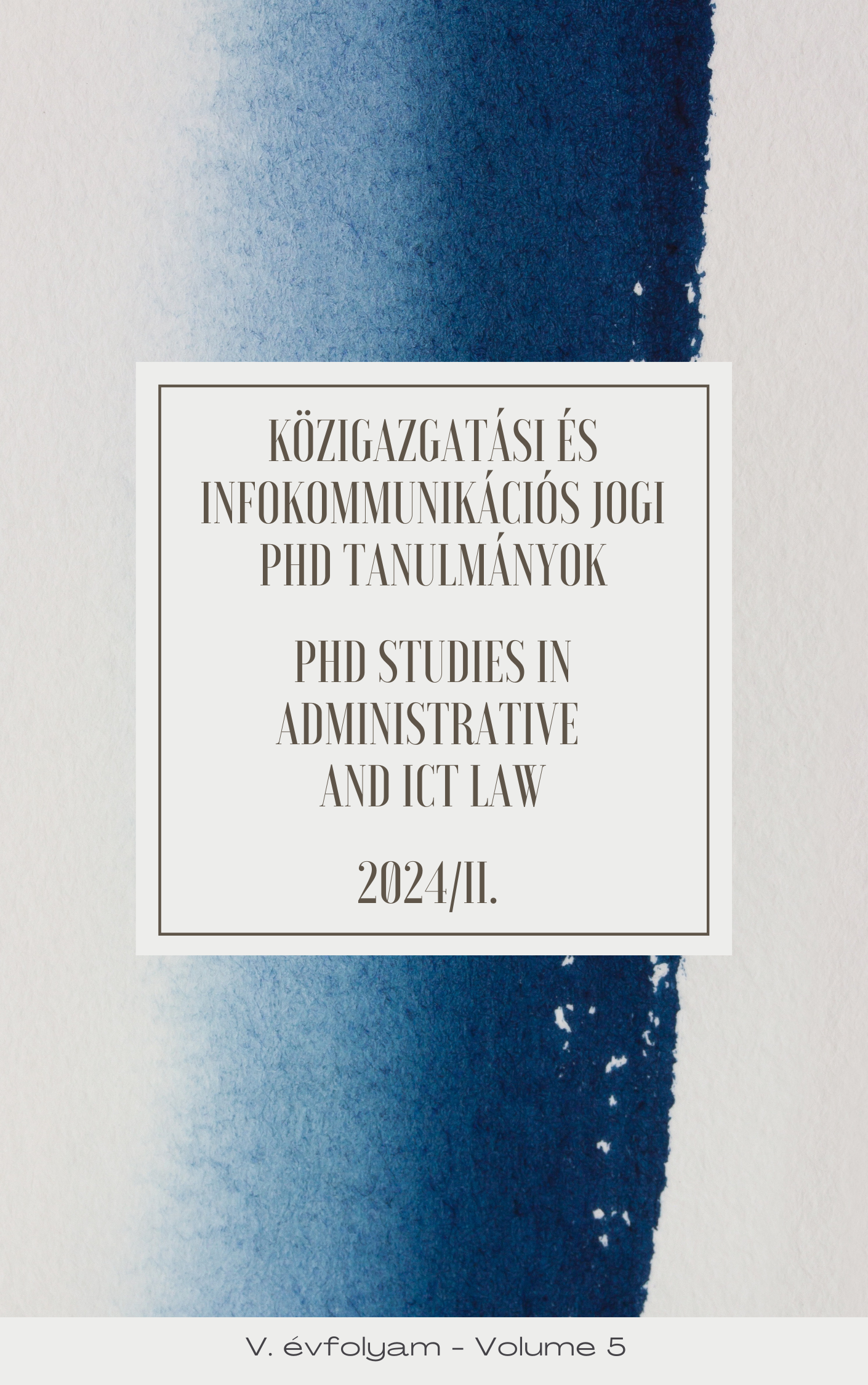The competition between AI applications and copyright law in Hungary
DOI:
https://doi.org/10.47272/KIKPhD.2024.2.3Keywords:
Data, Artificial intelligence application, IP lawAbstract
The topic of this study refers to a two and a half thousand year old paradox. The memorable proposition of the Zeno is about the battle between Achilles and the tortoise, thus proving Parmenides' thesis that there is no real movement. In a study by Gergely Bognár, he writes: 'In dichotomy, Parmenides' pupil divides a section (distance) into an infinite number of subsections (...) Achilles arrives in vain at the place where the tortoise was before, but it always moves a little bit forward. In this case, we cannot even say that he catches up with the turtle in the infinite time that experience shows that he leaves it behind, we can absolutely not talk about."
In the case of AI applications and legal regulation, the parallel is justified. The pace of development of copyright law is much slower than that of AI. After a brief description of AI applications, I will attempt to assess the changing actors in copyright law and their roles, mainly through source analysis.
Downloads
References
Albert Goldman: Elvis. Budapest, Európa Könyvkiadó, 1985.
Alföldy Dezső: A magyar szerzői jog, különös tekintettel a M. Kir. Kuria gyakorlatára. Jogállam 53, 1936.
Bognár Gergely: A megoldatlan Zénón paradoxonok kétezer-ötszáz éve új gondolatokat ébresztenek. Budapest, ELTE TTK, 2004.
Fehér Katalin: Digitálisidentitás-stratégiák az online adat- és tartalomhálózatokban és az online médiában. Jel-Kép, 2014/2. https://doi.org/10.20520/Jel-Kep.2014.2.10
Molnár András: „Peak-Oil”, és a jövő kőolaj konfliktusai. Kül – Világ 9(1-2), 2012.
Nótári Tamás: A magyar szerzői jog fejlődése Szeged, Lecturn, 2010.
Spiró György: Drámák III. (Az imposztor, Csirkefej, Kvartett) Budapest, Scolar, 2018.
Downloads
Published
Versions
- 2024-08-30 (2)
- 2024-08-30 (1)
How to Cite
Issue
Section
License
Copyright (c) 2024 Közigazgatási és Infokommunikációs Jogi PhD Tanulmányok (PhD Studies in Administrative and ICT Law)

This work is licensed under a Creative Commons Attribution-NonCommercial-ShareAlike 4.0 International License.
The rights to use this article for any third party after first publication are subject to the Creative Commons Attribution-NonCommercial-ShareAlike 4.0 (CC-BY-NC-SA 4.0) license terms.














